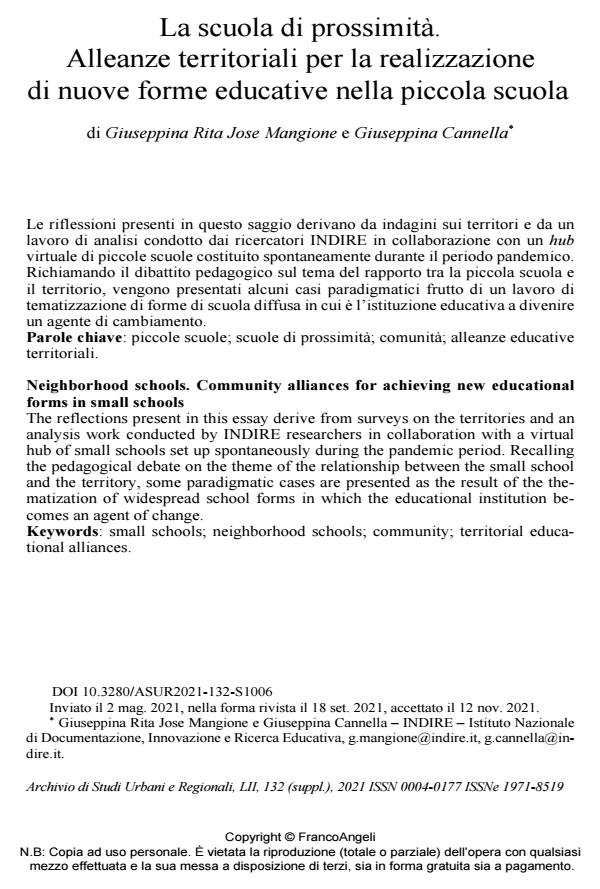Neighborhood schools. Community alliances for achieving new educational forms in small schools
Journal title ARCHIVIO DI STUDI URBANI E REGIONALI
Author/s Giuseppina Rita, Jose Mangione, Giuseppina Cannella
Publishing Year 2022 Issue 2021/132 Suppl.
Language Italian Pages 24 P. 86-109 File size 545 KB
DOI 10.3280/ASUR2021-132-S1006
DOI is like a bar code for intellectual property: to have more infomation
click here
Below, you can see the article first page
If you want to buy this article in PDF format, you can do it, following the instructions to buy download credits

FrancoAngeli is member of Publishers International Linking Association, Inc (PILA), a not-for-profit association which run the CrossRef service enabling links to and from online scholarly content.
The reflections present in this essay derive from surveys on the territories and an analysis work conducted by INDIRE researchers in collaboration with a virtual hub of small schools set up spontaneously during the pandemic period. Recalling the pedagogical debate on the theme of the relationship between the small school and the territory, some paradigmatic cases are presented as the result of the the-matization of widespread school forms in which the educational institution be-comes an agent of change.
Keywords: small schools; neighborhood schools; community; territorial educa-tional alliances.
- La scuola diffusa in aule decentrate. Analisi delle competenze spaziali dei docenti Stefania Chipa, Giuseppina Cannella, Giuseppina Mangione, in IUL Research 2/2023 pp.28
DOI: 10.57568/iulresearch.v4i8.506 - Social Justice, Media and Technology in Teacher Education Alessandra Anichini, Giuseppina Cannella, Rudi Bartolini, pp.151 (ISBN:978-3-031-20776-1)
Giuseppina Rita, Jose Mangione, Giuseppina Cannella, La scuola di prossimità. Alleanze territoriali per la realizzazione di nuove forme educative nella piccola scuola in "ARCHIVIO DI STUDI URBANI E REGIONALI" 132 Suppl./2021, pp 86-109, DOI: 10.3280/ASUR2021-132-S1006